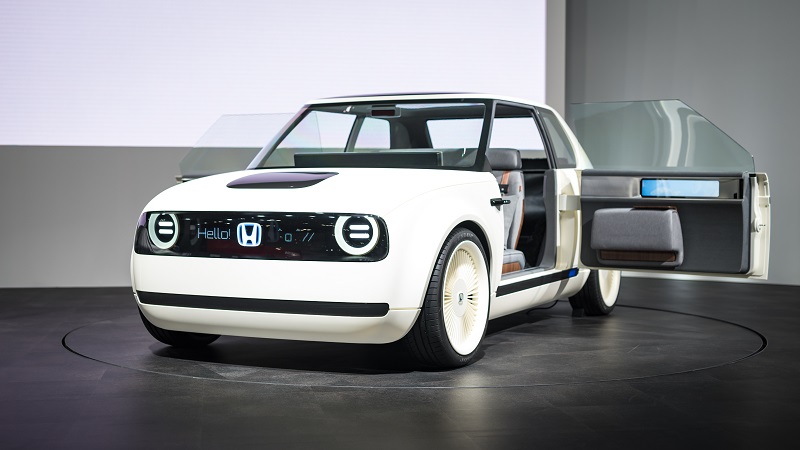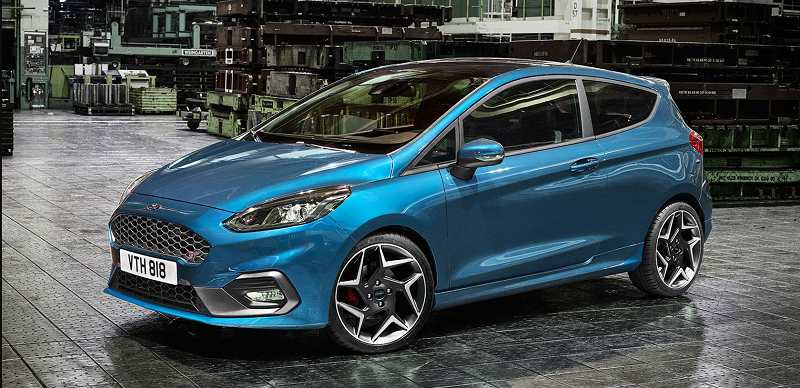Three Automotive Technologies to Look Forward To

Technology recently seems to have been progressing in leaps and bounds, and one market that seems on the cusp of various important innovations is the automotive market. Ranging from self-driving cars to clever propulsion methods, below is a quick list of three technologies which are almost-certainly going to be released in the future, and that I cannot wait to see the results of.
- Mazda’s Skyactiv-X Compression-Ignition Gasoline Engine
Mazda has long been known for quirky engines, with their distinguished past in rotary gasoline engines, and as such, it should be no surprise that they are leading the way in future development of gasoline-powered combustion engines. While most companies look towards electrification or hydrogen-reaction as the future of automotive power, Mazda has decided to continue development of the traditional gasoline engine.

This development takes the shape of the next in the development of the Skyactiv line of engines, the Skyactiv-X. This engine is what they are calling a Spark Plug Controlled Compression Ignition, or SPCCI for short. While originally envisioned as a Homogeneous Charge Compression Ignition (HCCI)—an engine which combusts ultra-lean mixtures of gasoline/air through compression alone, without the aid of a spark—but found it much too difficult to manage in a production variant. Instead, their SPCCI method was derived from these early forays into HCCI engine development: rather than relying purely on compression to ignite the lean mixture of air/fuel in the cylinders, Mazda achieves compression ignition using a spark plug as a combustion control.
While this is WAY more complicated than I can hope to understand without an engineer, here is the simple concept as I understand it: The Skyactiv-X engine compresses an ultra-lean mixture of gasoline and air, which is sufficient for light-load scenarios. Under heavier load, a small, highly-atomized dollop of extra fuel is added right before the power stroke of the cylinder, which is then ignited by the spark plug, raising cylinder pressures to the point of combustion. To even out the air/fuel mixture under such events, a small Roots-type supercharger can be installed.
While that explanation should be taken with a grain of salt, you can see the concept in action in the following video released by Mazda:
Car and Driver, who has had the fortune to drive the engine, as well as the new Skyactiv design architecture, stated that it worked wonderfully for the most part, feeling powerful for its size. The engine they drove produced about 188 horsepower and 170 lb-ft of torque from the 2.0-liter Skyactiv-X.

They said that for the most part, their drive with it displayed an impressive feat of development, albeit there was a knocking sound during the change over from pure compression ignition to spark-aided compression ignition. Expect production versions to mask this sound.
Look for the next-generation Mazda 3 in around two years, which will see the introduction of this engine. I can’t wait.
- 48 Volt Mild Hybrid Systems (MHEV’s)

This one may seem like a strange one for me to look forward to, but I think the possibilities of the current market trend towards MHEV’s can open some very interesting doors. Current 48-volt MHEV systems integrate a generator/alternator into the belt-driven starter motor, generating power into a 48-volt battery system. This battery is used to power the vehicle under ‘coasting’ situations and generally provide aid to the combustion motor, as well as charging the traditional 12-volt battery and system via a DC/DC converter.

While currently being designed to run off the engine so as to impact current car design as little as possible—the same reason the system feeds into another 12-volt system—there is no reason that future MHEV’s could ‘decouple’ the 48-volt system from the engine. If the system were to be run entirely off of regenerative braking, solar charging, or other trick methods I cannot think of, and decoupled from the engine, then the engine would have to belt-drive one less accessory. As all belt-driven accessories leach power, this would grant the combustion engine an inherent boost in efficiency. If further accessories could be run off of this 48-volt system—air conditioning, starter/alternator, etc.—than the engine could be left free to get on with its job of powering the wheels.
These systems, combined with ever-more efficient transmissions, could extend the life of the combustion engine beyond what was foreseen even a decade ago. I cannot wait to see if my hopes are worthwhile, or are all for naught.
- Autonomous Vehicle Development and Regulation

I love driving. Nothing is better than carving down a mounting road, scything around corners perfectly, a smile glued to your face. Yet, at the same time, I hate driving; nothing is worse than sitting in some traffic jam miles long, going on hour three of incremental uses of the throttle and brake, straining to see what is causing your visit to purgatory. It is for this reason, despite my love of driving, that I cannot wait for the day I can take my hands off the wheel, lay back, and read a book, worry free. While this may be far in the distance, I do believe it is the inevitable march of progress.
What I really cannot look wait for is the regulation of autonomous vehicles, beyond the rudimentary guidelines currently laid out. On a federal level, the National Highway and Transportation Safety Administration (NHTSA) has released voluntary guidelines, clarifications, and slight rules, although nothing concrete. These rules amount to stating that the responsibility of regulation rests on the state, and that companies need not wait when for such regulation before beginning to test their vehicle.

As of the writing of this article, half of our 50-state union has exactly zero legislation on the books regarding autonomous vehicles, and a further five of the remaining 25 only have executive orders offering guidelines. As development continues, and with the newest NHTSA guidelines, more and more states will have to begin regulating the industry, something I think must happen to ensure enough consumer trust for the adoption of such a technology.
Taking your hands off the wheel, trusting a car, sure sounds scary though…
Bonus! Three Cars I Can’t Wait to See
2019 Hyundai Santa Cruz

Described as a ‘lifestyle pickup’ I am interested in what the Korean market would present as their first ‘truck’ for the U.S. market. The Tucson-based pickup is reminiscent of the failed Subaru Outback Baja, and could have either a gasoline or diesel engine. Honda’s new Ridgeline and GMC’s/Chevrolet’s Canyon/Colorado have all seen increased sales, suggesting an offering from Hyundai would succeed—as well as face established competition. With more and more auto shows passing, and still no announcement, we can still only hope that this will come to market.
The world needs more small trucks.
Euro 2018 Ford Fiesta ST

I love the current-generation Ford Fiesta ST. In fact, I own one, have modified it extensively, and tracked the crap out of it, all with it soldiering on to its current 25,000 miles with no problems whatsoever. That is why, when I heard that the next-generation Fiesta ST—which the US is not getting due to our dislike of small cars—was getting a three-cylinder 1.5L turbocharged engine to replace our current four-cylinder 1.6L turbocharged engine, my expectations were low. Power levels would remain the same, but the ‘headroom’ left by the Ford engineers for tuners is likely not as much as the current mill.
While my expectations are low for this engine, I am looking forward to it because no matter what, the outcome is a good one for me. If it is a great engine, than a car I love gets a worthy successor, and if it isn’t as great an engine as the current EcoBoost mill, than I have the satisfaction of owning the better car. Win-Win!
2019 Chevrolet Corvette C8 “Zora”

This is a tough one to look forward to because there has been no confirmation that it is even happening. There have long—like half a century long—been rumors of a mid-engine Corvette, as the father of the car, Zora Arkus-Duntov had always wanted to build such a car. Now, with spy shots emerging of just such a car rolling around Chevrolet’s proving grounds, and growing competition from other brands, it seems the mid-engine Corvette is almost here.
When I see it, I will believe it, and because of that, I can’t wait to see what comes of these mules.
Categories
